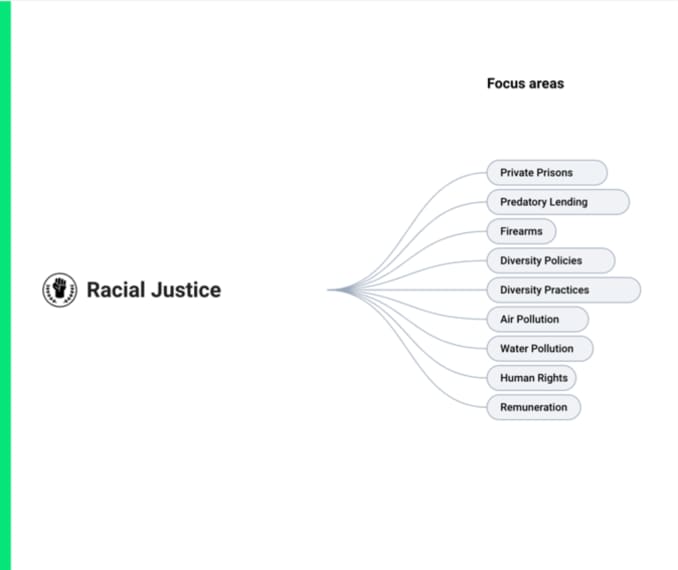CNBC, PUBLISHED TUE, DEC 29 20208:00 AM EST, Deborah Nason
- Environmental, social and corporate governance factors vary by company and industry.
- In recent years, more bond analysts have been paying attention to ESG factors.
- Just as asset managers need to be educated about ESG factors, so do advisor clients.
Sustainable investing incorporates environmental, social and governance considerations.
But how exactly do these factors fit into the analytical process, and how do they add value? CNBC consulted with several experts to find out.
ESG factors do vary by company and industry.
For example, a financial institution can be exposed to concerns such as financial inclusion (providing access to the underserved), employee satisfaction and business ethics, he said. To see how well the company is managing these factors, Sustainalytics will look closely at the firm’s management systems and policies, how they report on outcomes and any negative press.
It may seem odd at first to apply measurable values to societal issues, but it is possible. As examples, measurable social metrics for a company include employee turnover, diversity percentages and pay scale ratios, said Conor Platt, founder and CEO of Confluence Analytics, which aggregates ESG data and creates predictive performance metrics for individual companies and exchange-traded funds. These factors are then ranked against peer companies within their specific sector or industry.
In recent years, more bond analysts have been paying attention to ESG factors, said Judy Wesalo Temel, senior vice president, director of credit research with asset manager Fiera Capital. Municipal bond ratings agencies have also been more focused on these factors, she added.
“Investors are always looking at bond proceeds, but they also want to know where exactly their money is going and ‘Can you find the data regarding overall long-term impacts of the bond?’” she said.
ESG analysis captures issues usually missed by standard credit analysis, such as climate impact and governance concerns (e.g., timeliness of issuers’ financial disclosure and budget process transparency), Temel said. ESG-related insights in turn shine a new light on municipal bonds.
“People buy [them] for preservation of principle, tax-exemption purposes and safety,” she added. “But beyond that, muni bonds are the original impact investment instruments.
“They build schools, roads, hospitals – all sorts of things that improve the human condition.”
The challenges of ESG
Digging deeper into the methodology of a major ESG ratings firm, certified financial planner Marcio Silveira, financial advisor with Toler Financial in Silver Spring, Maryland, found several inconsistencies:
- A great deal of subjectivity goes into deciding which ESG factors to focus on.
- There’s not a consensus yet on what issues are relevant.
- There is a lack of uniformity in reporting on ESG issues.
- A lower rating doesn’t always capture the potential for a fund manager to effect change through shareholder activism.
There are inherent complexities present when working with ESG data, Platt said.
“The data marketplace is fragmented – when you buy an ESG rating, you’re not getting a consensus view, but one proprietary view,” he said. “You’d need to buy several to be confident about the ratings.
The world could ultimately be rewarding companies for better behavior and better stewardship of these important risks.Marcio SilveiraFINANCIAL ADVISOR AT TOLER FINANCIAL
“The harder problem is what to do with this data,” Platt added. “Not all ESG factors help stock performance.”
Furthermore, individual asset managers have their own processes, so “adding some new thing to the mix is both scary and cumbersome,” Platt said.
Just as asset managers need to be educated about ESG factors, so do advisor clients. And the value-add goes beyond financial returns, according to Jay Lipman, co-founder and president of Ethic, a technology platform and sustainable asset manager. His company provides educational materials, for both advisors and their clients, which illustrate 19 ESG categories, each with sub-categories (see graphic of one such category).

This education provides advisors opportunities to deepen their engagement with their clients, thus minimizing attrition, as well as to acquire new business, whether via sustainably-focused clients or new talent, Lipman said.
“Advisors are the conduit harnessing investors’ emotional connection to their money,” he said. “Not only do clients see their money invested correctly, but they feel more empowered.
“Client reactions to the ESG materials are visceral; it’s an emotional conversation.”
Lipman calls this “full information investing.”
“It’s about framing – we’re building this portfolio for the rest of your life,” he added.
For his part, Silveira sees a macro benefit accruing from integrating ESG factors into the analytical process.
“Why we’re excited about ESG is that, as the market comes to integrate and understand the mechanics of these types of risk, it will lead to increased valuations and prices for the companies with the lowest ESG risk,” he said.
“The world could ultimately be rewarding companies for better behavior and better stewardship of these important risks,” Silveira said. “And ultimately, higher valuations will result in a lower cost of capital.”







